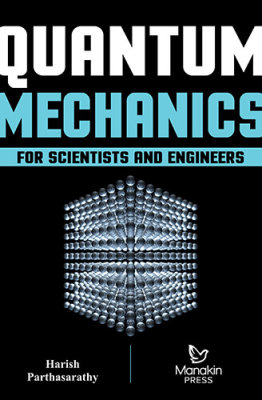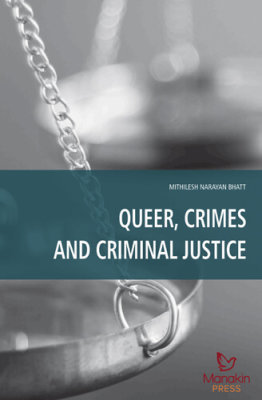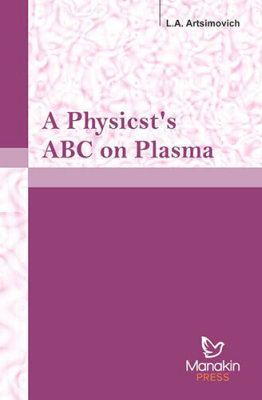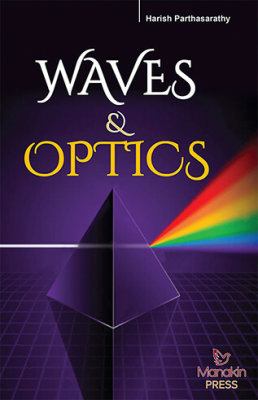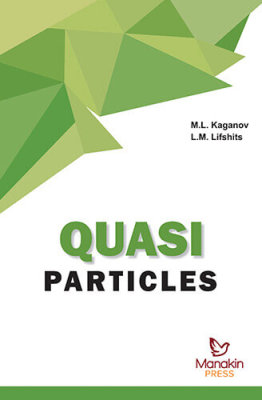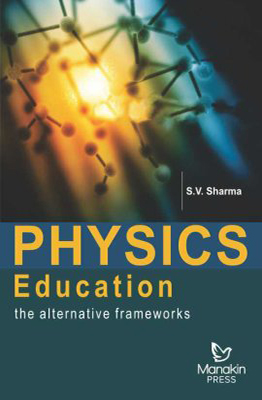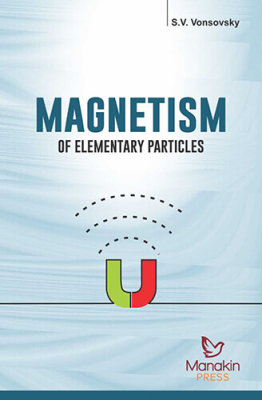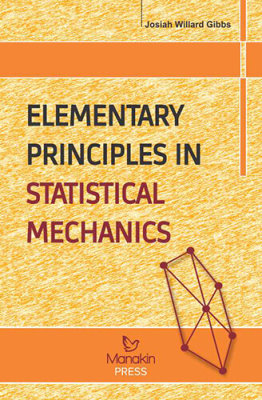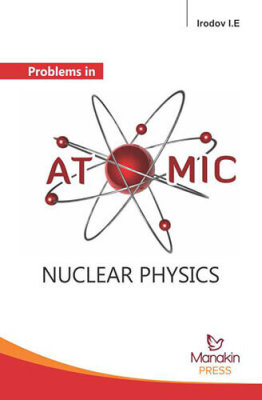Harish Parthasarathy | Category: Physics
Binding Type: Paperback Binding
Book Details
ISBN: 9789386221872
YOP: 2018
Pages: 225
Order also on
This book covers the entire span of quantum mechanics whose developments have taken place during the early part of the twentieth century until the present day. We start with the Rutherford-Bohr model of the atom followed by Schrodinger’s wave mechanics with its application to the solution of calculating the energy spectrum of a particle in a box, the harmonic oscillator and finally the hydrogen atom. Heisenberg’s matrix mechanics and its duality with Schrodinger’s wave mechanics, quantum mechanics in the interaction picture.
Dirac’s relativistic theory of the electron exhibiting the spin of the electron as a relativistic effect when it interacts with an external electromagnetic field. Feynman’s path integral approach to non-relativistic quantum mechanics with is a marvellous intuitive interpretation as a sum over paths and how classical mechanics is obtained from its limit as Planck’ constant tends to zero, methods for computing the spectra of the Dirac Hamiltonian in a radial potential, quantum field theory as developed by Feynman, Schwinger, Tomonaga and Dyson for describing the interaction between electrons, positrons, and photons via propagators using both the operator theoretic expansions and Feynman’s path integral. We also introduce time-independent and time-dependent perturbation theory in quantum mechanics with applications to quantum gate design for quantum computers forming a major part of the research conducted by the author’s research group, Quantum noise introduced into the Schrodinger and Dirac’s equation based on the Hudson-Parthasarathy quantum stochastic calculus in Boson Fock space, scattering theory and wave operators with applications to quantum gate design, some aspects of second quantization like the interpretation of Boson Fock space in terms of harmonic oscillator algebras and the BCS theory of superconductivity, Wigner-Mackey-Frobenius theory of induced representations of a group with applications to Wigner’s theory of particle classification, Dirac’s equation in a gravitational field and Yang-Mills non-Abelian gauge theories with application to the construction of unified quantum field theories and finally, the more recent theory of super-symmetry which is a Boson-Fermion unification theory. We have discussed the statistics of Boson’s, Fermions and Maxwell-Boltzmann based on entropy maximization. The book is written in problem-solution format and it would be of use to physicists and engineers interested respectively in developing unified field theories and in the design of quantum gates.
1. The De-Broglie Duality of particle and wave properties of matter.
2. Bohr’s correspondence principle
3. Bohr-Sommerfeld’s quantization rules.
4. The principle of superposition of wave functions and its application to the Young double-slit diffraction experiment.
5. Schrodinger’s wave mechanics and Heisenberg’s matrix mechanics
6. Dirac’s replacement of the Poisson bracket by the quantum Lie bracket.
7. Duality between the Schrodinger and Heisenberg mechanics based on Dirac’s idea.
8. Quantum dynamics in Dirac’s interaction picture.
9. The Pauli equation: Incorporating spin in the Schrodinger wave equation in the presence of a magnetic field.
10. The Zeeman effect.
11a.The spectrum of the Hydrogen atom.
11b.The spectrum of particle in a box.
11c.The spectrum of a quantum harmonic oscillator.
11. Time independent perturbation theory: Calculation of the energy levels and eigenfunctions of non-degenerate and degenerate systems using perturbation theory.
12. Time dependent perturbation theory: Calculation of the transition probabilities of a quantum system from one stationary state of the unperturbed system to another stationary state in the presence of a time varying interaction potential.
13. The full Dyson series for the evolution operator of a quantum system in the presence of a time varying potential.
14. The transition probabilities in the presence of a stochastically time varying potential.
15. Basics of quantum gates and their realization using perturbed quantum systems.
16. Bounded and unbounded linear operators in a Hilbert space.
17. The spectral theorem for compact normal and bounded and unbounded self-adjoint operators in a Hilbert space.
18. The general theory of Events, states and observables in the quantum theory.
19. The evolution of the density operator in the absence of noise.
20. The Gorini-Kossakowski-Sudarshan-Lindblad (GKSL) equation for noisy quantum systems.
21. Distinguishable and indistinguishable particles: The Maxwell-Boltzmann, Bose-Einstein and Fermi-Dirac statis- tics.
22. The relationship between spin and statistics.
23. Tensor products of Hilbert spaces
24. Symmetric and antisymmetric tensor products of Hilbert spaces, the Fock spaces.
25. Coherent /exponential vectors in the Fock spaces.
26. Creation, conservation and annihilation operators in the Boson Fock space
27. The general theory of quantum stochastic processes in the sense of Hudson and Parthasarathy.
28. The quantum Ito formula of Hudson and Parthasarathy.
29. The general theory of quantum stochastic differential equations.
30. The Hudson-Parthasarathy noisy Schrodinger equation and the derivation of the GKSL equation from its partial trace.
31. The Feynman path integral for solving the Schrodinger equation.
32. Comparison between the Hamiltonian (Schrodinger-Heisenberg) and Lagrangian (path integral) approaches to quantum mechanics.
33. The quantum theory of fields: Quantization of the Klein-Gordon field, quantization of the electromagnetic field, quantization of the Dirac electron-Positron field interacting with a quantum electromagnetic field, The Feynman diagrams for calculating scattering probabilities between electrons, positrons and photons.
34. Dirac’s wave equation in a gravitational field.
35. Canonical quantization of the gravitational field.
36. The scattering matrix for the interaction between photons, electrons, positrons and gravitons. Calculating the scattering matrix using the Feynman path integral and also using the operator formalism with the Feynman diagrammatic rules.
37. Atom interacting with a Laser; The general theory based on quantum electrodynamics. Representing the quantum electromagnetic field using finite sets of creation and annihilation operators. Representing any density operator for the quantum electromagnetic field via the diagonal Glauber-Sudarshan representation. Representing any state of the laser interacting with the spin of an atom using the Galuber-Sudarshan representation having matrix coefficients. Expressing the evolution equation for the density operator of the laser-atom system using the Glauber-Sudarshan representation.
38. The classical and quantum Boltzmann equations.
39. Bands in a semiconductor: Derivation using the Bloch wave functions in a 3-D periodic lattice.
40. The Hartree-Fock apporoximate method for computing the wave functions of a many electron atom.
41. The Born-Oppenheimer approximate method for computing the wave functions of electrons and nuclei in a lattice.
42. The performance of quantum gates in the presence of classical and quantum noise.
43. Design of quantum gates by applying a time varying electromaguetic field on atoms and oscillators.
44. Solution of Dirac’s equation in the Coulomb potential: Relativistic correction to the levels of the hydrogen atom.
45. Dirac’s equation in general radial potentials.
46. The Schrodinger equation in an electromangetic field described as a quantum stochastic process. Calculation of transition probabilities for the atom and bath.
47. Dirac’s equation in an electromagnetic field described as a quantum stochastic process.
48. General Scattering theory, the Moller and wave operators, the scattering matrix, the Lippman-Schwinger equation for the scattering matrix, Born scattering.
49. Design of quantum gates using scattering theory.
50. Evans-Hudson flows and its application to the quantization of the fluid dynamical equations in noise.
51. Classical non-linear filtering: The Kushner, Stratanovich, Kallianpur-Striebel formulas.
52. Derivation of the extended Kalman filter (EKF) as an approximation to the Kushner filter.
53. Belavkin’s theory of non-demolition measurements and quantum filtering in coherent states based on the Hudson- Parthasarathy Boson Fock space theory of quantum noise.
54. Classical control of a stochastic dynamical system by error feedback based on a state observer derived from the EKF.
55. Quantum control using error feedback based on Belavkin quantum filters for the quantum state observer.
56. Lyapunov’s stability theory with application to classical and quantum dynamical systems.
57. The Yang-Mills field and its quantization using path integrals.
58. Schwinger’s analysis of QED.
59. Quantum Control.
60. Knill-Laflamme theorem and quantum error correcting codes.
61. Quantum hypothesis testing.
62. Damped quantum harmonic oscillators using the GKSL formalism.
63. The Yang-Mills field and its quantization using path integrals.
64. A general remark on path integral computations for gauge invariant actions
This book covers the entire span of quantum mechanics whose developments have taken place during the early part of the twentieth century until the present day. We start with the Rutherford-Bohr model of the atom followed by Schrodinger’s wave mechanics with its application to the solution of calculating the energy spectrum of a particle in a box, the harmonic oscillator and finally the hydrogen atom. Heisenberg’s matrix mechanics and its duality with Schrodinger’s wave mechanics, quantum mechanics in the interaction picture.
Dirac’s relativistic theory of the electron exhibiting the spin of the electron as a relativistic effect when it interacts with an external electromagnetic field. Feynman’s path integral approach to non-relativistic quantum mechanics with is a marvellous intuitive interpretation as a sum over paths and how classical mechanics is obtained from its limit as Planck’ constant tends to zero, methods for computing the spectra of the Dirac Hamiltonian in a radial potential, quantum field theory as developed by Feynman, Schwinger, Tomonaga and Dyson for describing the interaction between electrons, positrons, and photons via propagators using both the operator theoretic expansions and Feynman’s path integral. We also introduce time-independent and time-dependent perturbation theory in quantum mechanics with applications to quantum gate design for quantum computers forming a major part of the research conducted by the author’s research group, Quantum noise introduced into the Schrodinger and Dirac’s equation based on the Hudson-Parthasarathy quantum stochastic calculus in Boson Fock space, scattering theory and wave operators with applications to quantum gate design, some aspects of second quantization like the interpretation of Boson Fock space in terms of harmonic oscillator algebras and the BCS theory of superconductivity, Wigner-Mackey-Frobenius theory of induced representations of a group with applications to Wigner’s theory of particle classification, Dirac’s equation in a gravitational field and Yang-Mills non-Abelian gauge theories with application to the construction of unified quantum field theories and finally, the more recent theory of super-symmetry which is a Boson-Fermion unification theory. We have discussed the statistics of Boson’s, Fermions and Maxwell-Boltzmann based on entropy maximization. The book is written in problem-solution format and it would be of use to physicists and engineers interested respectively in developing unified field theories and in the design of quantum gates.
1. The De-Broglie Duality of particle and wave properties of matter.
2. Bohr’s correspondence principle
3. Bohr-Sommerfeld’s quantization rules.
4. The principle of superposition of wave functions and its application to the Young double-slit diffraction experiment.
5. Schrodinger’s wave mechanics and Heisenberg’s matrix mechanics
6. Dirac’s replacement of the Poisson bracket by the quantum Lie bracket.
7. Duality between the Schrodinger and Heisenberg mechanics based on Dirac’s idea.
8. Quantum dynamics in Dirac’s interaction picture.
9. The Pauli equation: Incorporating spin in the Schrodinger wave equation in the presence of a magnetic field.
10. The Zeeman effect.
11a.The spectrum of the Hydrogen atom.
11b.The spectrum of particle in a box.
11c.The spectrum of a quantum harmonic oscillator.
11. Time independent perturbation theory: Calculation of the energy levels and eigenfunctions of non-degenerate and degenerate systems using perturbation theory.
12. Time dependent perturbation theory: Calculation of the transition probabilities of a quantum system from one stationary state of the unperturbed system to another stationary state in the presence of a time varying interaction potential.
13. The full Dyson series for the evolution operator of a quantum system in the presence of a time varying potential.
14. The transition probabilities in the presence of a stochastically time varying potential.
15. Basics of quantum gates and their realization using perturbed quantum systems.
16. Bounded and unbounded linear operators in a Hilbert space.
17. The spectral theorem for compact normal and bounded and unbounded self-adjoint operators in a Hilbert space.
18. The general theory of Events, states and observables in the quantum theory.
19. The evolution of the density operator in the absence of noise.
20. The Gorini-Kossakowski-Sudarshan-Lindblad (GKSL) equation for noisy quantum systems.
21. Distinguishable and indistinguishable particles: The Maxwell-Boltzmann, Bose-Einstein and Fermi-Dirac statis- tics.
22. The relationship between spin and statistics.
23. Tensor products of Hilbert spaces
24. Symmetric and antisymmetric tensor products of Hilbert spaces, the Fock spaces.
25. Coherent /exponential vectors in the Fock spaces.
26. Creation, conservation and annihilation operators in the Boson Fock space
27. The general theory of quantum stochastic processes in the sense of Hudson and Parthasarathy.
28. The quantum Ito formula of Hudson and Parthasarathy.
29. The general theory of quantum stochastic differential equations.
30. The Hudson-Parthasarathy noisy Schrodinger equation and the derivation of the GKSL equation from its partial trace.
31. The Feynman path integral for solving the Schrodinger equation.
32. Comparison between the Hamiltonian (Schrodinger-Heisenberg) and Lagrangian (path integral) approaches to quantum mechanics.
33. The quantum theory of fields: Quantization of the Klein-Gordon field, quantization of the electromagnetic field, quantization of the Dirac electron-Positron field interacting with a quantum electromagnetic field, The Feynman diagrams for calculating scattering probabilities between electrons, positrons and photons.
34. Dirac’s wave equation in a gravitational field.
35. Canonical quantization of the gravitational field.
36. The scattering matrix for the interaction between photons, electrons, positrons and gravitons. Calculating the scattering matrix using the Feynman path integral and also using the operator formalism with the Feynman diagrammatic rules.
37. Atom interacting with a Laser; The general theory based on quantum electrodynamics. Representing the quantum electromagnetic field using finite sets of creation and annihilation operators. Representing any density operator for the quantum electromagnetic field via the diagonal Glauber-Sudarshan representation. Representing any state of the laser interacting with the spin of an atom using the Galuber-Sudarshan representation having matrix coefficients. Expressing the evolution equation for the density operator of the laser-atom system using the Glauber-Sudarshan representation.
38. The classical and quantum Boltzmann equations.
39. Bands in a semiconductor: Derivation using the Bloch wave functions in a 3-D periodic lattice.
40. The Hartree-Fock apporoximate method for computing the wave functions of a many electron atom.
41. The Born-Oppenheimer approximate method for computing the wave functions of electrons and nuclei in a lattice.
42. The performance of quantum gates in the presence of classical and quantum noise.
43. Design of quantum gates by applying a time varying electromaguetic field on atoms and oscillators.
44. Solution of Dirac’s equation in the Coulomb potential: Relativistic correction to the levels of the hydrogen atom.
45. Dirac’s equation in general radial potentials.
46. The Schrodinger equation in an electromangetic field described as a quantum stochastic process. Calculation of transition probabilities for the atom and bath.
47. Dirac’s equation in an electromagnetic field described as a quantum stochastic process.
48. General Scattering theory, the Moller and wave operators, the scattering matrix, the Lippman-Schwinger equation for the scattering matrix, Born scattering.
49. Design of quantum gates using scattering theory.
50. Evans-Hudson flows and its application to the quantization of the fluid dynamical equations in noise.
51. Classical non-linear filtering: The Kushner, Stratanovich, Kallianpur-Striebel formulas.
52. Derivation of the extended Kalman filter (EKF) as an approximation to the Kushner filter.
53. Belavkin’s theory of non-demolition measurements and quantum filtering in coherent states based on the Hudson- Parthasarathy Boson Fock space theory of quantum noise.
54. Classical control of a stochastic dynamical system by error feedback based on a state observer derived from the EKF.
55. Quantum control using error feedback based on Belavkin quantum filters for the quantum state observer.
56. Lyapunov’s stability theory with application to classical and quantum dynamical systems.
57. The Yang-Mills field and its quantization using path integrals.
58. Schwinger’s analysis of QED.
59. Quantum Control.
60. Knill-Laflamme theorem and quantum error correcting codes.
61. Quantum hypothesis testing.
62. Damped quantum harmonic oscillators using the GKSL formalism.
63. The Yang-Mills field and its quantization using path integrals.
64. A general remark on path integral computations for gauge invariant actions

